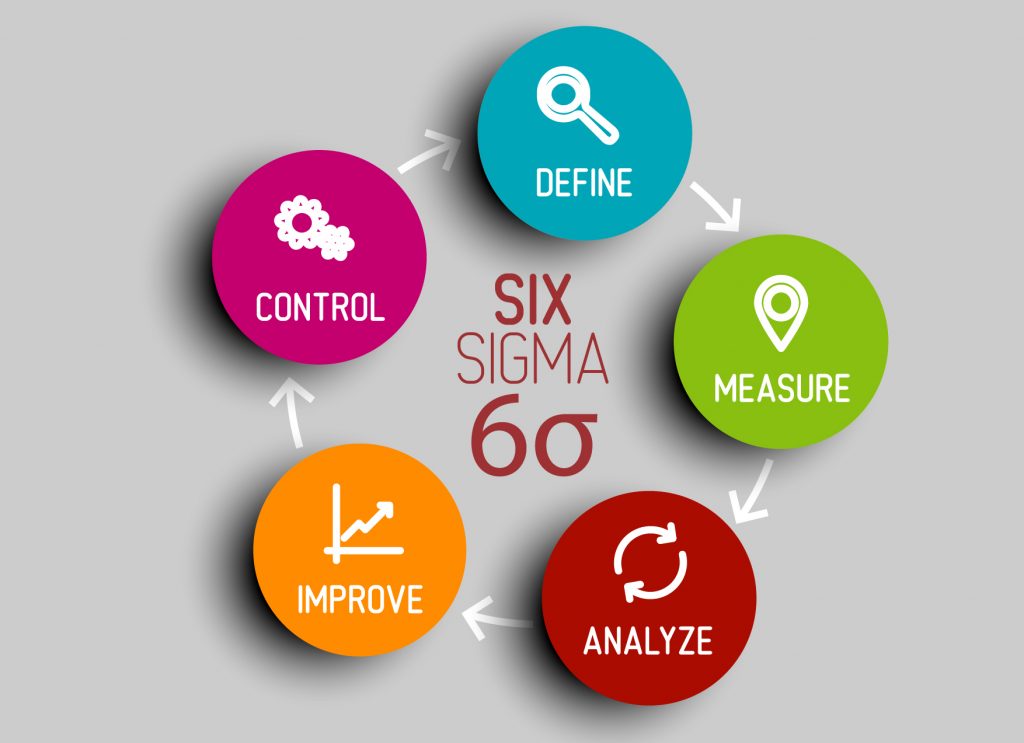Quality Management and Quality Control are key elements of every business. There are several approaches to improve the capability of a business’s process and reduce the likelihood of defects – and one common method of doing so is by using Six Sigma in Quality Management.
In this short guide, we’ll go over the key elements of using Six Sigma in Quality Management, and give you practical tips on how you can implement it in your organisation.
What Is the Six Sigma Concept in Quality Management?
Six Sigma is an approach to quality management that focuses on minimising the defects in a product or service by measuring the number of defects in a process and systematically resolving them. The Six Sigma management tool can be widely applied to manufacturers, supply chains, engineering firms, finance, healthcare, and many more.
When it comes to quality management, applying the Six Sigma approach does not only mean solving quality issues. Instead, its emphasis lies on prevention, continuous monitoring, and data collection.
The main value of the approach is that it focuses on evidence-based decision-making processes, which are backed up by data and information. So, instead of haphazardly fixing issues that may not cause any real problems, companies that apply Six Sigma to their quality control processes target very specific problems and resolve them in a timely manner.
What Are the Key Principles of Six Sigma?
There are two methodologies that the Six Sigma approach utilizes. These provide a set of steps a company must follow to optimize processes and ensure quality management.
The DMAIC Method in Six Sigma
The DMAIC process consists of five steps:
1) Define – The first step of the process is to define what you want to achieve with your project.
2) Measure – Then you need to decide how you will measure your goals and which statistical analysis and data collection method you will use.
3) Analyze – The third step is to analyze the process and discover potential influencing variables.
4) Improve – You then need to make improvements based on the results of your analysis.
5) Control – Finally, you will need to control the outcome by evaluating whether your changes have been successful or not.
The DMADV Method in Six Sigma
The DMADV method, on the other hand, focuses on the development of a new product. This method also has 5 steps:
1) Define – Start by defining the purpose of the projects and set measurable goals.
2) Measure – The second step is to determine the customer requirements and define what characteristics should be measurable, so that data can be collected and compared with the specified requirements.
3) Analyze – The third step involves developing design alternatives, and identifying requirements and these determine the optimum combination of requirements. As well as determining the life cycle cost of the design and identifying the best available design option to meet the goals.
4) Design – The design phase involves developing a high-level design, and then a more detailed model prototype to identify potential flaws before production.
5) Verify – The final phase is for the validation of the design. All relevant stakeholders should be satisfied with the design, and it should be effective in the real world.
What Are the Benefits of Using Six Sigma in Quality Control?
Different types of businesses can implement Six Sigma. The main benefits of using Six Sigma in Quality Control processes include:
- Cost-savings: Six Sigma helps to identify problems early on, and therefore reduces the cost of recalls or poor reputation.
- Increased efficiency: By removing mistakes and variability, Six Sigma implementation reduces the time spent on projects.
- Better management: The approach requires intensive training and strong leadership from top management.
- Quantifiable decision-making: Six Sigma promotes using data to support all decisions, making change management and quality control more accessible.
- Higher customer satisfaction: More efficiency and improved quality management ensure customer satisfaction.
- Increased profit: Ultimately, fewer inputs and faster processes lead to higher profits.
How HQTS Uses Six Sigma in Quality Control
HQTS implements several Six Sigma approaches in our quality control processes, which we then transfer to our customers through our quality management services.
- Removing variability: we use statistical data to remove variability through a process called Measurement System Assessment. This helps us to understand the level of uncertainty in any given manufacturing process. When the uncertainty is too high (generally over 30%), we suggest process changes.
- Risk mitigation: we evaluate the potential risks in the manufacturing process. To do so, we aggregate statistical data and determine which risk factors rank the highest. Once we have enough data, we recommend our customers a risk mitigation plan to ensure high-quality production.
- Risk prevention: like the above process, we also use process data for risk prevention. If our engineers detect a high margin of potential error, we then look for the root cause of the problem. The result – is less risk and better quality.
The Levels of Six Sigma in Quality Management
Quality management under Six Sigma relies heavily on adequately assigned management roles. There are typically five levels involved in the implementation process: 1) executive leadership; 2) champions; 3) Master Black Belts; 4) Black Belts, and 5) Green Belts.
These designations respond to the level of involvement that each party has in the project and to their level of Six Sigma understanding. In fact, companies can certify their staff at different levels to ensure a robust implementation process when switching to Six Sigma.
Is Six Sigma Right for Your Business?
There are several reasons for companies to implement Six Sigma.
- Are you facing frequent customer complaints? Six Sigma is one of the best ways to ensure customer satisfaction through quality control. The process ensures better products with more efficient production time. All this equals happier customers.
- Are you looking to improve internal communication? Another reason to implement Six Sigma is for better coordination. When your company gets into the same mindset, it can do wonders to boost morale. Plus, Six Sigma focuses on better management!
- Do you want to generate better partnerships? Happy customers plus happy employees, equal improved relationships overall. Also, better processes tend to make it easier for partnerships to last.
Six Sigma for Improved Quality Management: Conclusion
The Six Sigma concept was introduced as a way to improve quality management and proactively reduce waste in business processes so that companies could excel in their markets. The two main methods for Six Sigma are the DMAIC method and DMADV method (intended for specific product development) and these can be applied to manufacturers, supply chains, engineering firms, and many more.
At HQTS we use several Six Sigma approaches in our quality control processes. Do you want to learn how we can help your business improve its processes in today’s dynamic environment? Contact us today.




